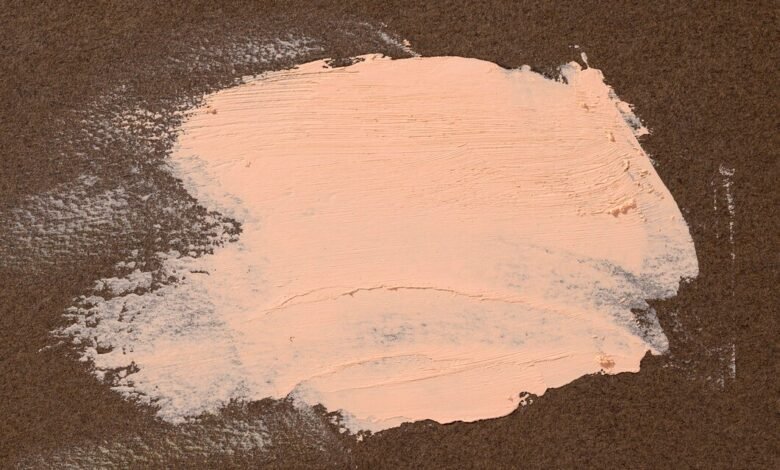What is Brown Pigment in Vintage Photos?

Vintage photos have a charm that’s hard to resist. Whether it’s the way they capture moments long past or their unique aesthetic, they have a special place in our hearts. However, if you’ve ever come across old family albums or antique photos, you may have noticed something peculiar: a brownish pigment that seems to spread across the image, often altering its original look. So, what is this brown pigment in vintage photos, and what causes it? Let’s dive into the fascinating world of old photographs to uncover the mystery.
Introduction
When you first look at an old photograph, it’s easy to get lost in the history and memories it holds. But beyond the smiles and landscapes lies a question that often goes unasked: why do some of these photos have a brown tint? In this blog post, we’ll explore the origins of this brown pigment, how it develops over time, and what it means for preserving these precious memories. Whether you’re a photography enthusiast or someone interested in family history, understanding this phenomenon will give you a deeper appreciation of vintage photos and the stories they tell.
The Cause of Brown Pigment in Vintage Photos
The brown pigment that appears in vintage photos is commonly the result of a chemical process known as silver mirroring or oxidation. Vintage photos, particularly those printed using the silver gelatin process, rely on silver salts suspended in a gelatin layer on paper. Over time, these silver particles can undergo oxidation due to exposure to air, humidity, and pollutants.
Silver Oxidation: The Main Culprit
Oxidation is the process by which silver particles in the photograph react with sulfur compounds in the environment, forming silver sulfide. Silver sulfide appears as a brownish, sepia tone on the photograph. This process is gradual and often results in uneven discoloration, giving the photo a distinct and sometimes charming patina.
Environmental Factors
Several environmental factors contribute to the development of this brown pigment:
- Humidity: High humidity levels can accelerate the oxidation process, leading to more pronounced discoloration.
- Pollution: Airborne pollutants, such as sulfur dioxide, can react with the silver particles in the photo, speeding up the formation of silver sulfide.
- Light Exposure: Prolonged exposure to light, especially UV light, can also hasten the degradation of the photo’s original pigments.
How Brown Pigment Affects the Integrity of Vintage Photos
The appearance of brown pigment in vintage photos is not just a cosmetic issue; it can also indicate the overall degradation of the photograph. As the silver particles oxidize, the photo’s clarity and contrast may diminish, affecting the visibility of details in the image. This can be particularly concerning for historical photos where maintaining the integrity of the image is crucial.
Preservation of Vintage Photos
If you want to preserve vintage photos and slow down the development of this brown pigment, there are several steps you can take:
- Proper Storage: Store photos in a cool, dry place, away from direct sunlight. Use acid-free storage materials, such as archival-quality boxes and sleeves.
- Controlled Environment: Keep the photos in an environment with controlled temperature and humidity levels. A relative humidity of around 30-40% is ideal.
- Limit Handling: Minimize direct handling of the photos to prevent the introduction of oils and contaminants from your skin.
The Beauty of Patina in Vintage Photos
While the brown pigment is technically a sign of degradation, many people appreciate the aesthetic value it adds to vintage photos. The sepia tone can evoke a sense of nostalgia, enhancing the historical feel of the image. In fact, some modern photographers and designers intentionally recreate this effect in their work to give a contemporary photo a vintage look.
Conclusion
What is brown pigment in vintage photos is more than just a random discoloration; it’s a testament to the passage of time and the chemical processes that have quietly worked on these images over the decades. Understanding what causes this pigment helps us appreciate the delicate nature of old photographs and the importance of proper preservation techniques. Whether you’re a collector, a historian, or simply someone who enjoys flipping through old family albums, knowing the story behind the brown tint in these photos adds another layer of depth to your experience.
Frequently Asked Questions
- Can the brown pigment in vintage photos be removed?
Unfortunately, once the silver oxidation has occurred, it is challenging to reverse. However, professional photo restorers may be able to digitally restore the image to some extent.
- Does the brown pigment mean the photo is ruined?
Not necessarily. While it indicates some degradation, the photo can still be enjoyed and preserved as long as it’s stored properly.
- How can I prevent my vintage photos from developing brown pigment?
Proper storage in a cool, dry environment, along with minimal exposure to light and pollutants, can slow down the oxidation process.
- Are all vintage photos susceptible to developing brown pigment?
Photos printed using the silver gelatin process are particularly prone to this issue. However, other types of vintage photos can also develop discoloration over time due to various factors.
- What is silver gelatin, and why is it important?
Silver gelatin is a photographic process that uses light-sensitive silver salts in a gelatin layer to create an image. It was widely used in the early 20th century and is a key factor in why many vintage photos develop brown pigment.
- Can I still display vintage photos without damaging them?
Yes, but it’s best to display copies rather than originals. If you display originals, ensure they are framed with UV-protective glass and kept out of direct sunlight.



